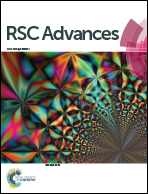Fingerprint profiling of polysaccharides from different parts of lotus root varieties
Abstract
Thirty-nine polysaccharides isolated from different parts of 13 lotus root varieties were characterized with fingerprint and chemometrics analyses to explore their similarity and diversity. The physicochemical features of lotus root polysaccharides (LRPs) were found to be the following: LRPs contained mainly polysaccharides (5.94 kDa) and polysaccharide-protein complexes (11.57 kDa and 5.30 kDa); their carbohydrates were composed of mannose, rhamnose, glucuronic acid, galacturonic acid, glucose, galactose and arabinose approximately in the molar ratio of 0.19 : 0.14 : 0.08 : 0.17 : 6.49 : 1.00 : 0.16; and node LRPs possessed more binding proteins and uronic acids than both flesh and peel LRPs. Their fingerprints based on Fourier-transform infrared spectroscopy, pre-column derivatization high-performance liquid chromatography and high performance size-exclusion chromatography all exhibited relatively high similarities, contributing to the common figerprint models which could be utilized as references for the identification of LPRs. In addition, the fingerprint characteristics associated with the between-group variability of LRPs in the score plots derived from multivariate analytical models might indicate which variety or part of lotus root they were isolated from. Therefore, multi-fingerprinting techniques have the potential to be applied to the identification and quality control of LRPs.



 Please wait while we load your content...
Please wait while we load your content...